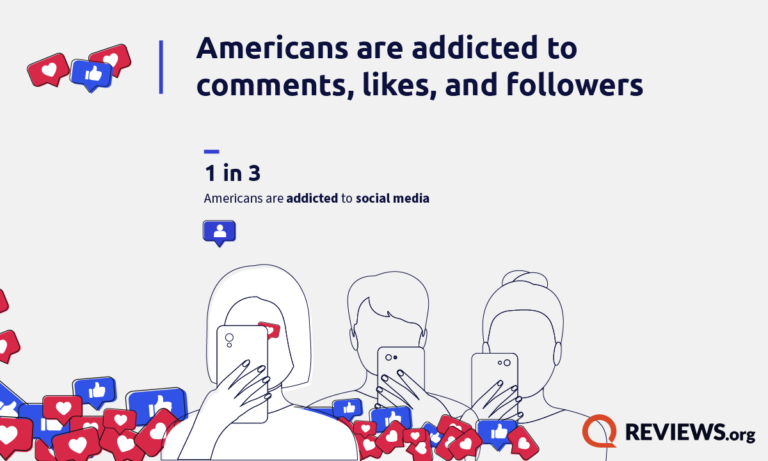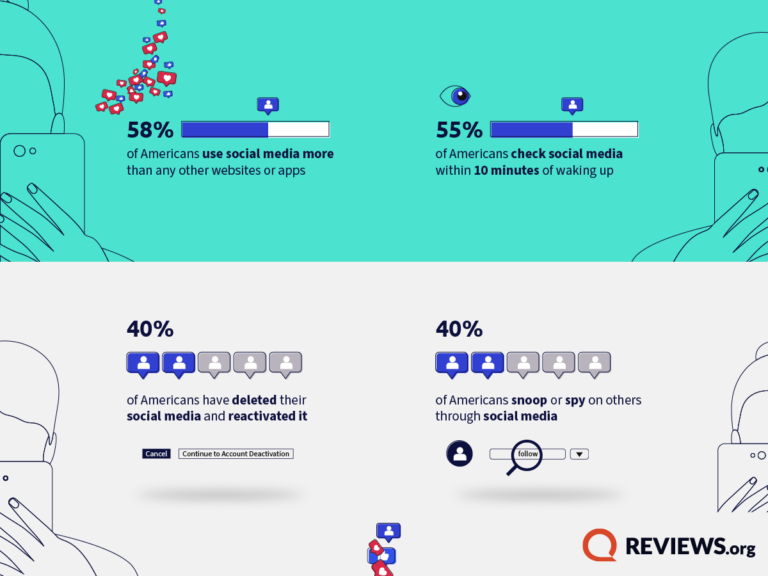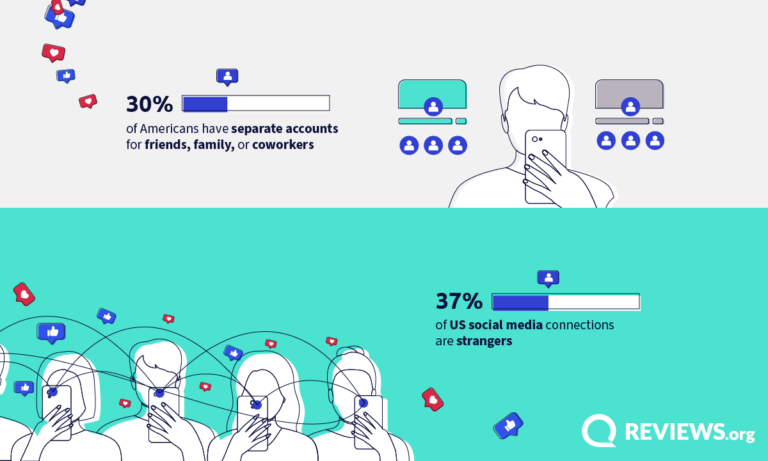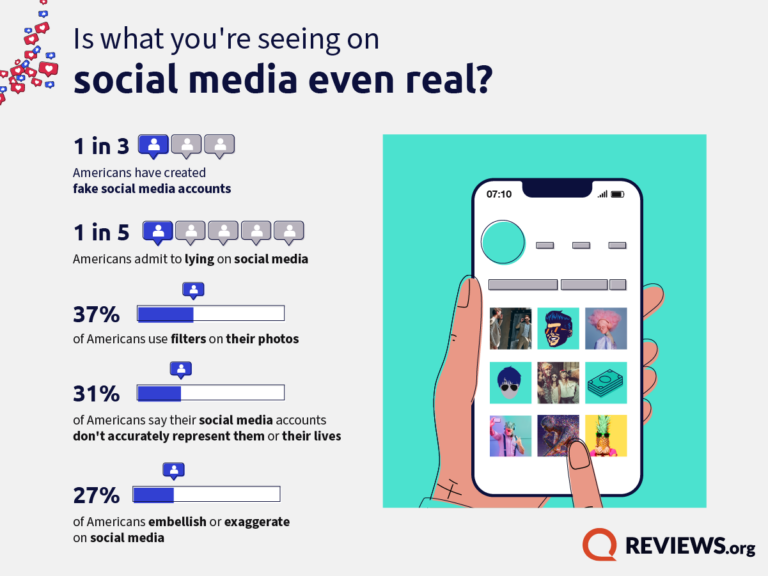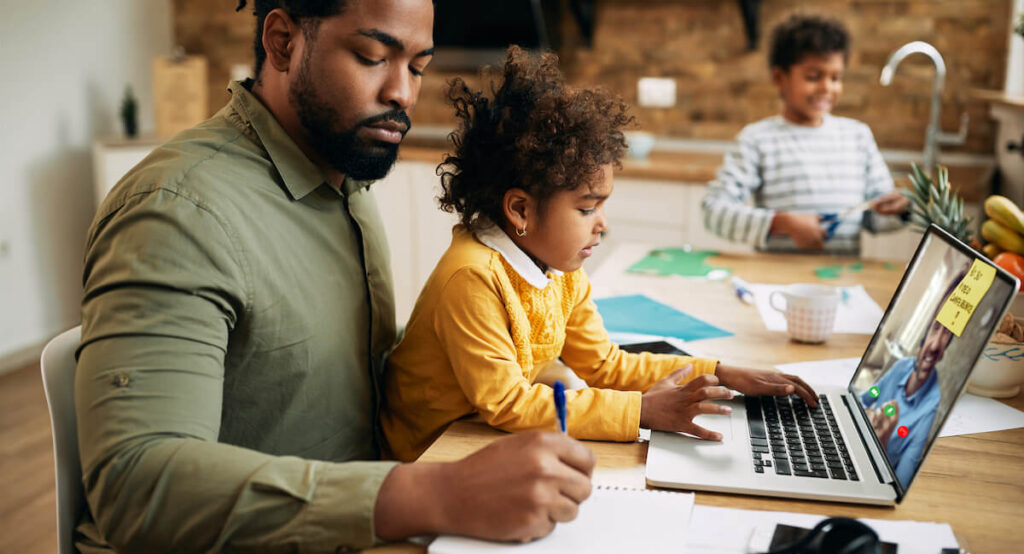Remember the YouTube Rewind videos that launched in 2010? The series was a look back on the popular videos and what people watched in the previous year—from “Charlie Bit My Finger” to “Gangnam Style.”
Well, it looks like we’ll see another big Rewind in 2023 because YouTube dominated in our survey. YouTube is the most popular social media app, with over 70% of people of every age watching videos.
- YouTube was the second most popular social media app, with a cumulative 72% respondent usage.
- To ensure your internet speed is fast enough for streaming video across multiple devices and users, you’ll need anywhere from 3 to 25Mbps of dedicated internet speed.
Facebook is the most widely used social media app, particularly among Millennial and Gen X respondents. In total, 73% of Americans use Facebook—it may not be the most widely checked, but it is still very popular.
- It probably helps that 32% of respondents ranked Facebook as the most addictive social media platform.
- That percentage puts Facebook in the #1 spot and almost 10% ahead of TikTok, which came in at #2 with 23% of respondents.
Rounding out the top five with YouTube and Facebook for most used and most addictive are TikTok, Instagram, and X, formerly known as Twitter.
- Instagram is the third most-used platform according to 54% of respondents, while TikTok only had 43% of the vote, and X takes 35%.
- On the addictive side, Facebook, TikTok, YouTube, and YouTube are the only platforms to hit double digits.
- TikTok is the second-most addictive, according to 23% of respondents, while YouTube hit 19% and Instagram ekes out 10%. X, formerly known as Twitter, rounds out the top five with 5%.
It’s not surprising to see X, formerly known as Twitter, at the bottom of the top five. The platform’s adoption rates are lower across all generations, suggesting it may not be as universally favored as other platforms.
Although it ranks towards the middle of the pack, Reddit’s niche audience shows that its users are dedicated. Sure, it may not be the most addictive or the most popular, but people use it.
- The platform came in at #9 as the most-used app (only 19% of respondents), well behind Instagram, TikTok, and Twitter.
- Respondents also don't think it's very addictive—only 2% find it addictive, putting it at #7 overall.
Pinterest also maintains popular appeal, with a consistent user base across generations. Members of all age groups who want a break from videos and scrolling may appreciate the content curation and visual focus.
- Pinterest is also in the middle of the pack, coming in at #7, with 32% of respondents saying they use it.
- Surprisingly, it’s also fairly addictive! Coming in right behind X with 2%, Pinterest ranks #6 for most addictive platforms.
Remember Threads? The platform is Meta’s answer to Twitter, and after a high number of sign-ups, adoption is slow going. It ranks towards the bottom among most-used social media apps (#10 with 7% of respondents), and it is not addictive at all.
- We found that Threads has relatively low usage across all generations, indicating that it may not have gained mainstream popularity.
The other three major social media platforms—Snapchat, LinkedIn, and Tumblr—have a more limited appeal and reach.
- Tumblr is the least-used social media app and one of the least addictive apps. LinkedIn is primarily used by people looking for a job or networking opportunities.
- And while Snapchat is popular among Gen Z, almost no Boomers use it.
Check out our full run-down of age group stats for more on the generational divide.
